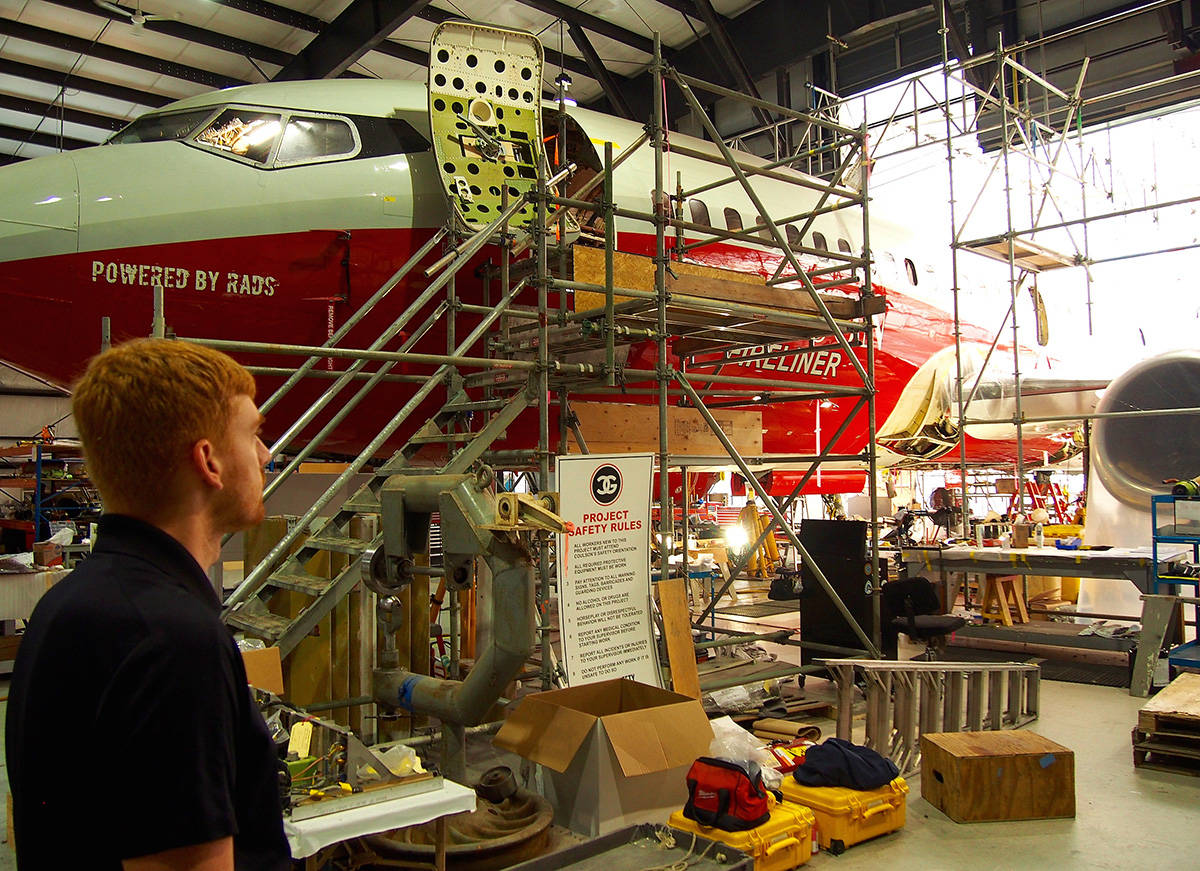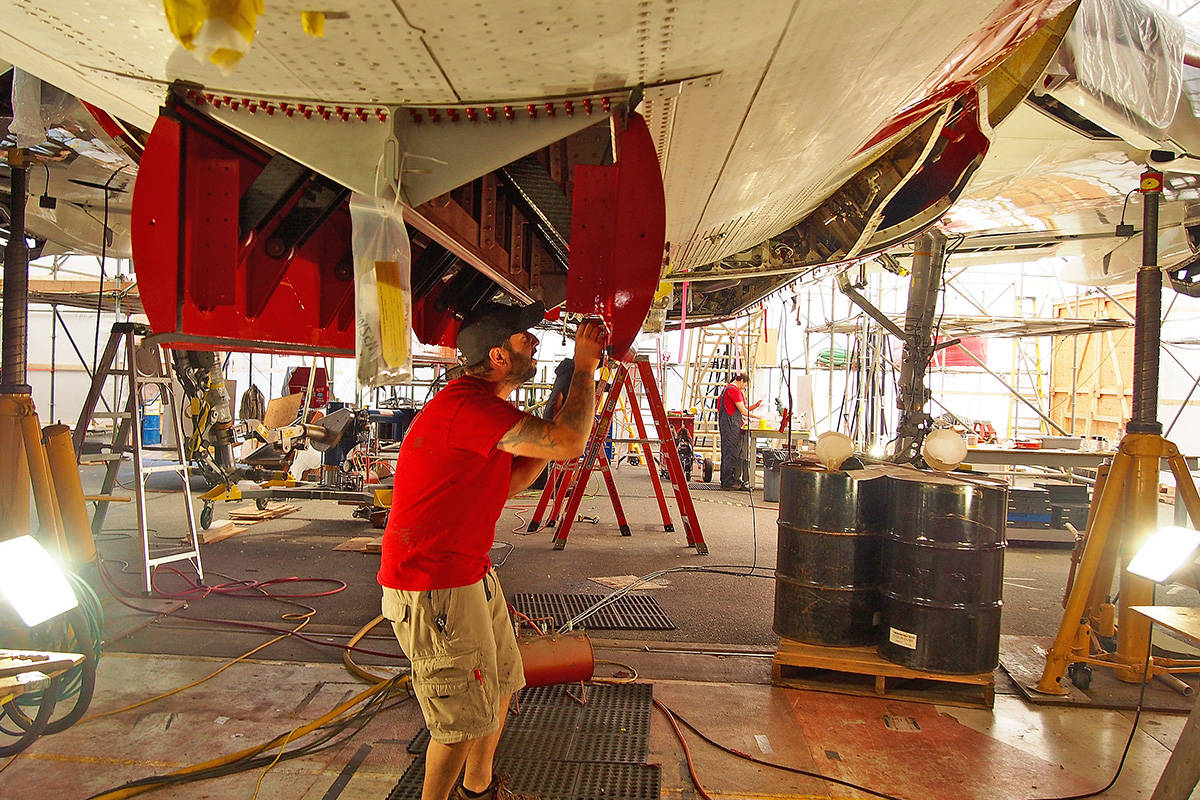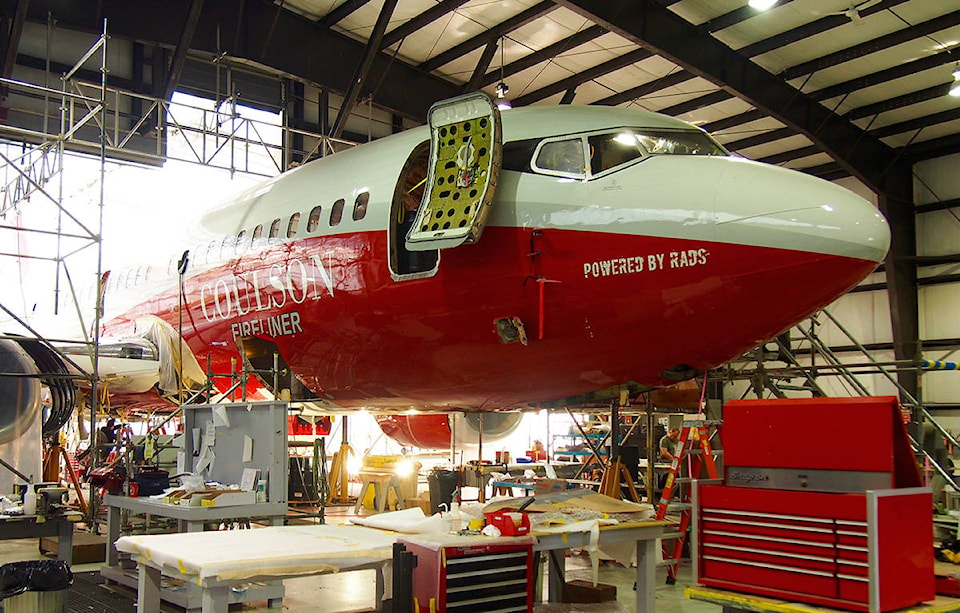MIKE YOUDS
SPECIAL TO THE NEWS
A 737 Classic parked in a hangar at Alberni Valley Regional Airport is the second to undergo modification after the first passed a maiden season with flying colours Down Under.
New South Wales Rural Fire Service had to have been impressed since it signed a contract last month to purchase the second B737 Fireliner modification.
“This is a 737-300 that we purchased in the last year from Southwest Airlines,” said Britt Coulson, vice-president aviation with Coulson Aviation, as he listed the selling features.
“It’s the newest by year of the larger air tankers in the world. It’s the only air tanker in the world that can carry its load of retardant at high altitudes and high speeds. It takes advantage of the air frame. And it’s one of the few air tanker modifications in the world that doesn’t limit the airplane at all.”
Another boast: This is the largest ever modification of a Boeing 737, the best-selling commercial jetliner in aviation history. The Fireliner represents the newest generation of air tankers, not only fast but also versatile, capable of transporting 72 firefighters in between its twin tanks, each of which has a capacity of more than 15,000 litres.
“We could lease it to West Jet,” Coulson said, though that’s highly unlikely considering the pressing demand for firefighting aircraft worldwide. The first Fireliner is fighting wildfires in California this season and the fleet is expected to be in service year-round. The company plans to modify up to eight more.
Why is no one else building these in view of heightened wildfire action around the world?
“It’s just so expensive,” Coulson said. “It’s very, very costly to build and design.” Each conversion costs in the range of $25 million.
Between the B737s and its C130 Hercules, the Coulson fleet now owns two of the largest air tankers in the world.
While the specifications are impressive, they don’t seem to be winning favour from the provincial government. Coulson said the B.C. Forest Service relies on the fleet of competitor Conair in Abbotsford, primarily comprised of older aircraft and turboprops. He’s quick to point out some of the Fireliner’s superior capabilities, such as a 430-knot air speed at 38,000 feet, extending its range and saving critical time and fuel.
“This will fly to three times the altitude and double to triple the speed while packing significantly more water,” he said.
Aerial firefighting in the U.S. and Australia has progressed to more advanced aircraft.
“It’s really just B.C. and Alberta that are stuck with the old planes. Not one of these larger air tankers has ever worked in this province … Canadian provinces don’t really embrace technology in new aircraft the way the rest of the world has.”
This, despite the fact that B.C. spends more on fighting wildfires than the State of California.
Coulson has been operating under contract with the Australian National Aerial Firefighting Centre (NAFC) in Australia since year 2000. The 2018-2019 fire season marked the first year Coulson was the largest operator of Type 1 rotary and fixed wing aircraft in that country.
Rob Rogers, acting commissioner with the New South Wales Fire Service, said that the RFS had evaluated several different large air tankers over recent fire seasons but settled on the B737 Fireliner.
“This type of aircraft provides us with a fast, effective and flexible option for fighting fires year-round, and supporting firefighters on the ground,” Rogers said.
Australia’s most populous state has also agreed to purchase two Citation V Lead/Intelligence aircraft. The purchases are accompanied by a 10-year operational contract with Coulson to provide all flight and maintenance personnel.


